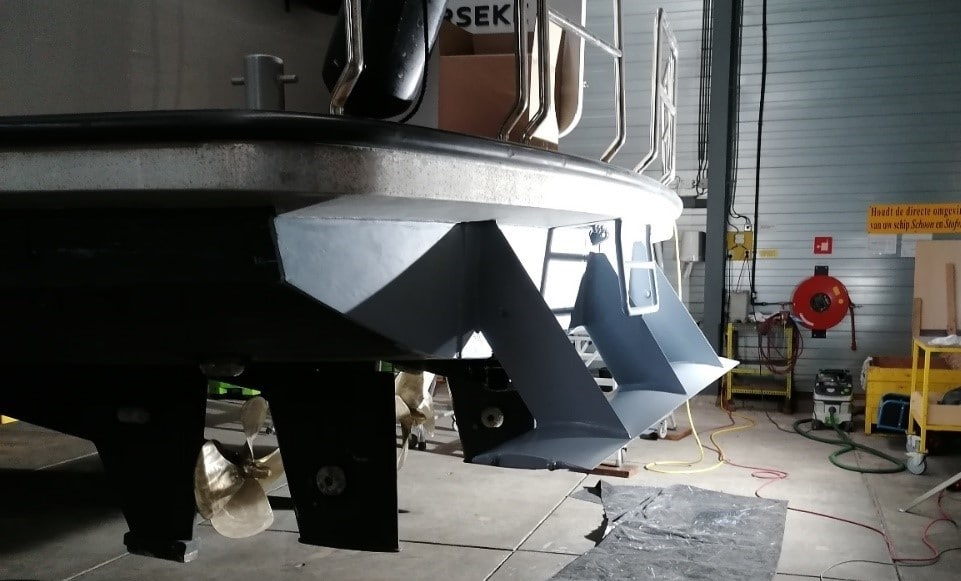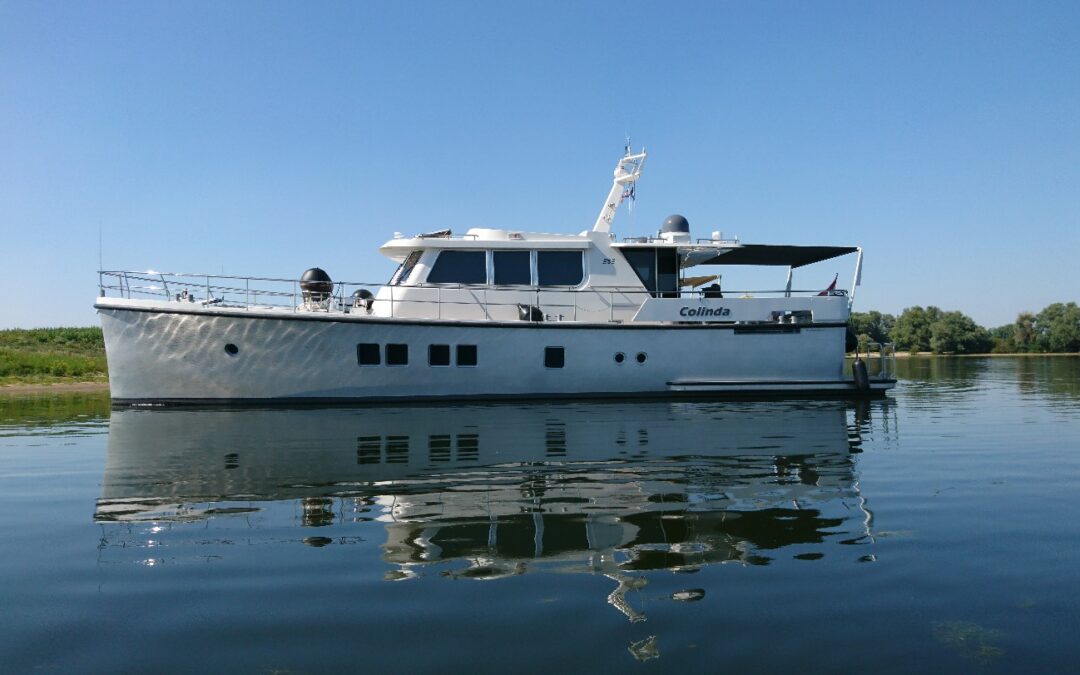Yerseke Watersportservice’s owner-manager, Gerard Sentse, was the first client to take delivery of our new semi-custom Hull Vane®. He was intrigued to find out what effect this ‘underwater spoiler’ would have once fitted to the Colinda – an 18.5-m (60.5 ft) aluminium motor yacht built at his shipyard.
We tested the yacht extensively both before and after the retrofit and were pleasantly surprised by the results. The Colinda now creates less wake, operates 20% more economically, musters an added 1.5 km/h (0.8 knots) at top speed and is significantly quieter.
The Hull Vane® is a Dutch invention that makes a wide range of vessels more comfortable and energy-efficient. In essence, it’s a fully customised underwater wing that converts the stern wave’s energy into forward thrust.
The semi-custom Hull Vane®, however, is a standardised variant specially designed and developed for displacement motor yachts between 10 and 20 m (33–66 ft) and a top speed between 20 and 25 km/h (11–13.5 knots).
MY Colinda
We conducted comprehensive tests on the South Beveland Canal near Wemeldinge (NL) before and after the Hull Vane® retrofit. Besides speed, we logged fuel consumption, dynamic trimming and afterdeck noise levels. The results were conclusive – the semi-custom Hull Vane® makes good on all its promises.
More than 20% ‘cleaner’
We recorded significantly reduced fuel consumption across its entire speed range – an average of 20%. At speeds between 14 and 16 km/h (7.5–8 knots), we noted an astounding 26% improvement. This, in turn, means reduced emissions of CO2 and other exhaust gases.
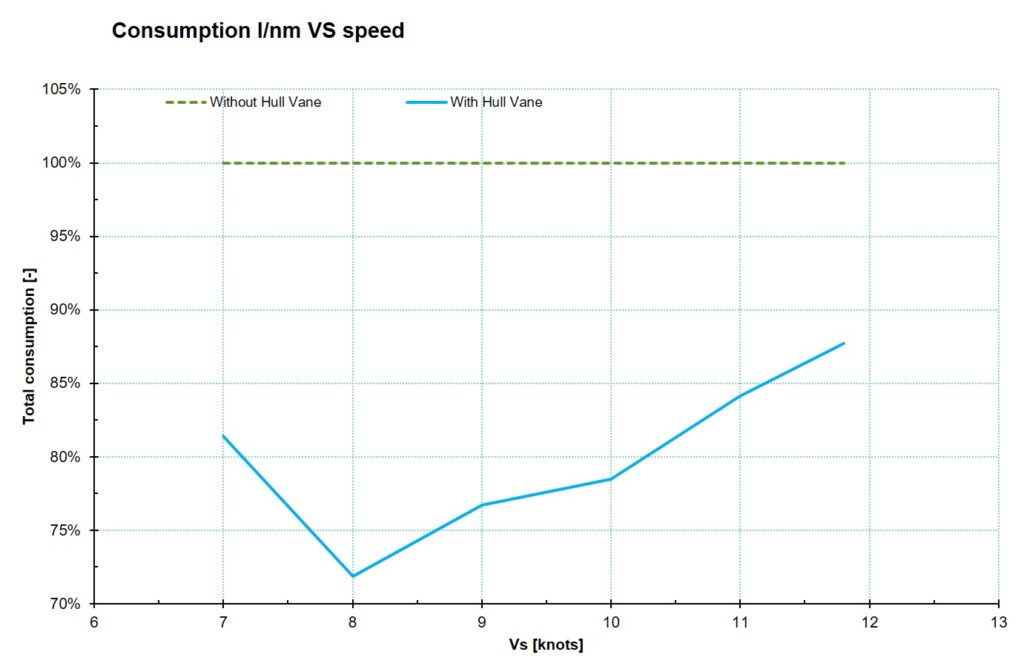
Faster, quieter cruising
Reduced resistance also resulted in a higher top speed, up from 21.9 km/h (11.8 knots) to 23.4 km/h (12.6 knots). What’s more, we conducted our tests in deep water, even though we knew the Hull Vane® to be even more effective in shallow water.
The Colinda used to reach her cruising speed of 18 km/h (9.7 knots) at 1600 RPM. Since her retrofit, she now reaches cruising speed at just 1440 RPM. This means she runs more quietly, and her engines produce less vibration.
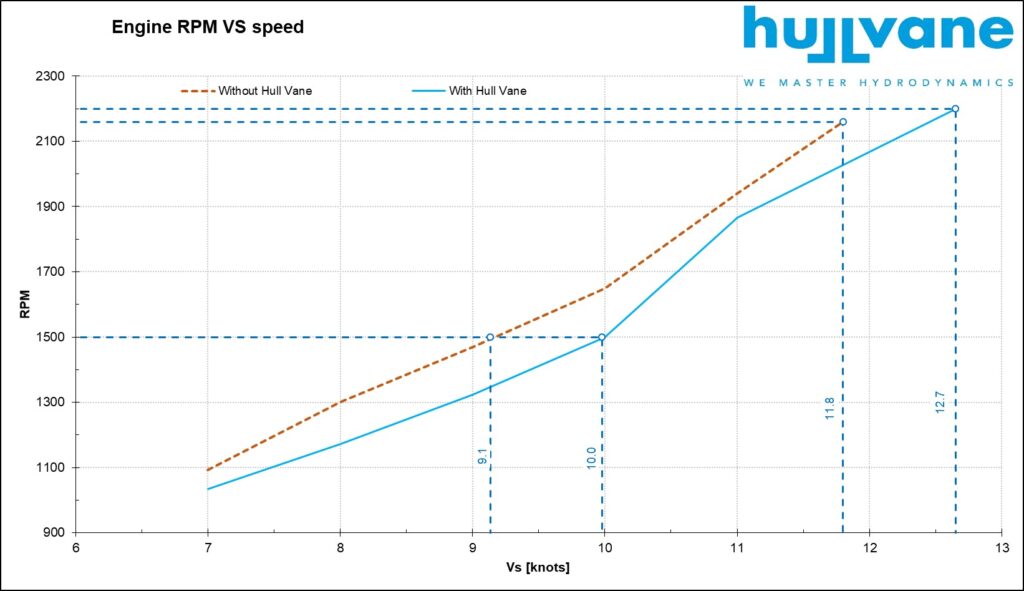
7 dB(A) quieter
Pieter Duzijn (Hull Vane® sales) explained another reason why the Colinda now runs more quietly, ‘We noticed that the device suppresses her stern wave significantly at all speeds. This results in lower noise levels on her afterdeck, which is used as a leisure area while cruising. At 15 km/h (8 knots), noise levels were 7 dB(A) lower, down from 72.6 to 65.6 dB(A), which makes a considerable difference to comfort levels.’
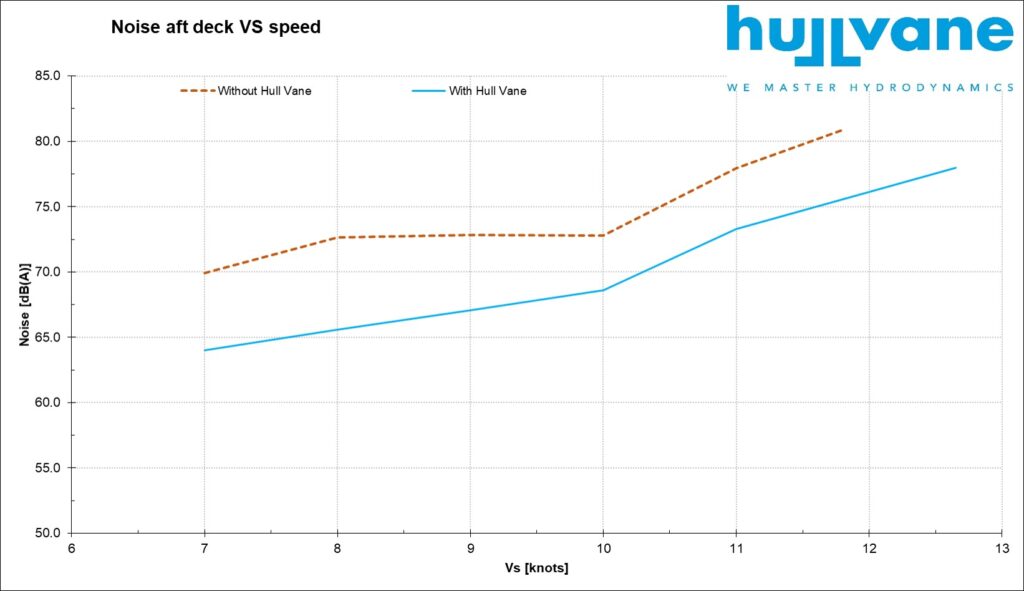
Suppressed stern wave
Gerard Sentse is impressed by the improvements, ‘Our client’s main priority was comfort, but also fuel consumption and CO2 emissions. Because the Colinda now reaches the same cruising speed at lower power output, she runs far more quietly.
What’s more, she now maintains an even keel better and creates less wake. We also noticed how the autopilot now holds a straight course while taking waves astern. A major improvement! Our client is really pleased with the retrofit, and we’ll definitely be suggesting it to our other clients.’
Pieter Duzijn added, ‘The Hull Vane® is unique within the yacht-building world because it not only improves on-board comfort, but efficiency and performance, too. It’s the most cost-effective upgrade you can make to a motor yacht. Period!
More and more yacht builders are offering a Hull Vane® as an option on their new builds, but the ease of installation on existing yachts means it’s also becoming an ever-more popular retrofit option.’
